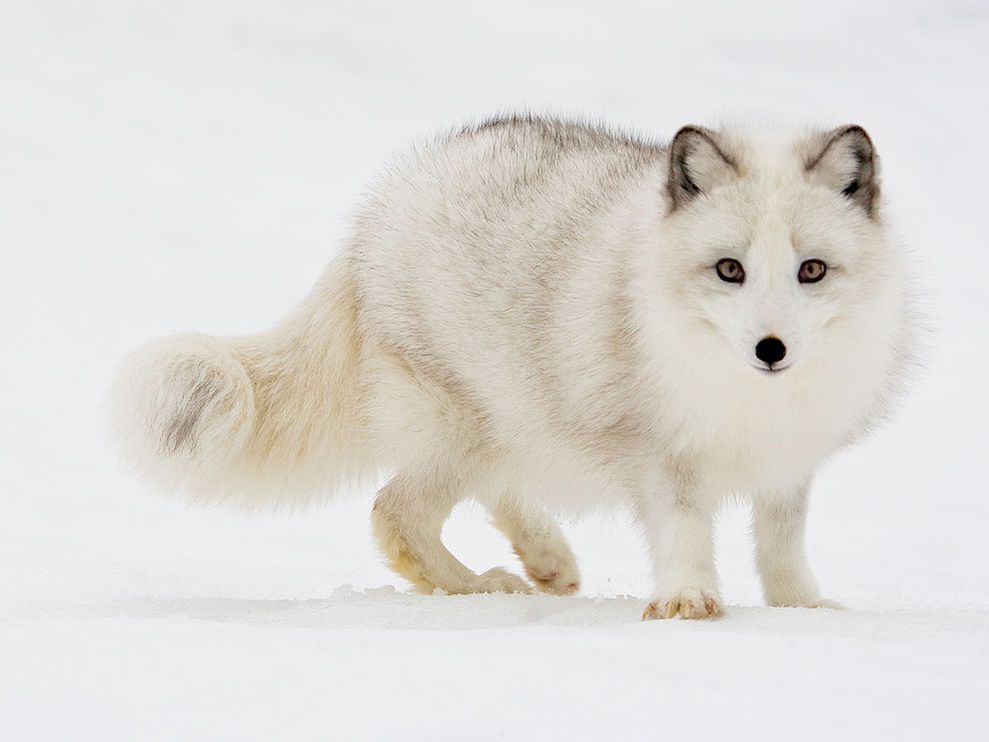Polar desert supports very little animal or plant life (less than 5 percent of the land area is covered with vegetation) due to a very short, dry growing season, dry air, permafrost, poor soils, and a lack of pollinating insects. The warmer Arctic region is called the Low Arctic Zone. This area supports more life, with more than 90 percent of the land area covered with hardy, cold-and-dry-adapted vegetation.
Animals that live in the Arctic (either full time or seasonally) are adapted to extreme conditions. Many animals who overwinter in the Arctic (like the Arctic fox and theermine) have a coat that thickens and changes color to white during the winter as camouflage in the snow (blending into the background is called cryptic coloration).
Some animals hibernate during the cold season; they go into a very deep, sleep-like state in which their heartbeat slows down. These animals often hibernate in an underground burrow or pit. Some hibernators include skunks, chipmunks, and some bears (but these bears are not true hibernators, they go into a state that is closer to a normal deep sleep).Many animals (like the Arctic tern) spend the summer months in the Arctic, but leave as the weather turns frigid and food becomes scarce (these animals return again the next summer, repeating this pattern year after year). This behavior is called migrating.
Examples of animals:










No hay comentarios:
Publicar un comentario